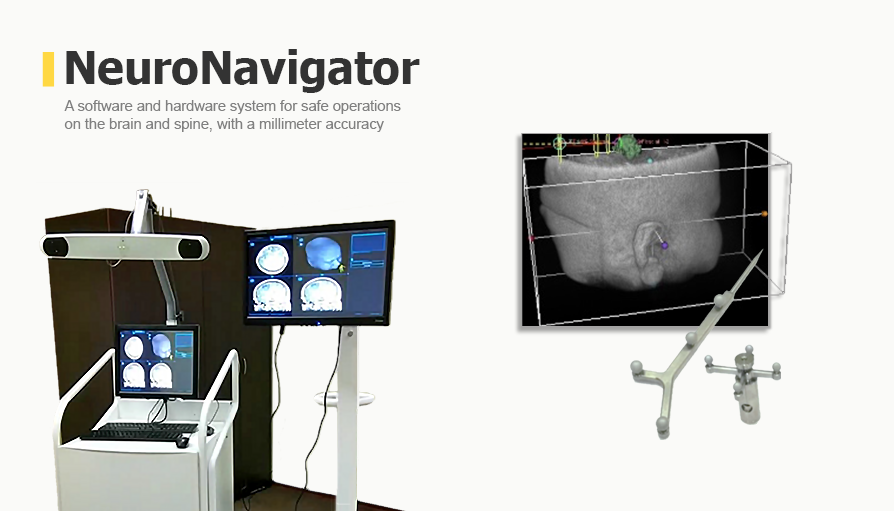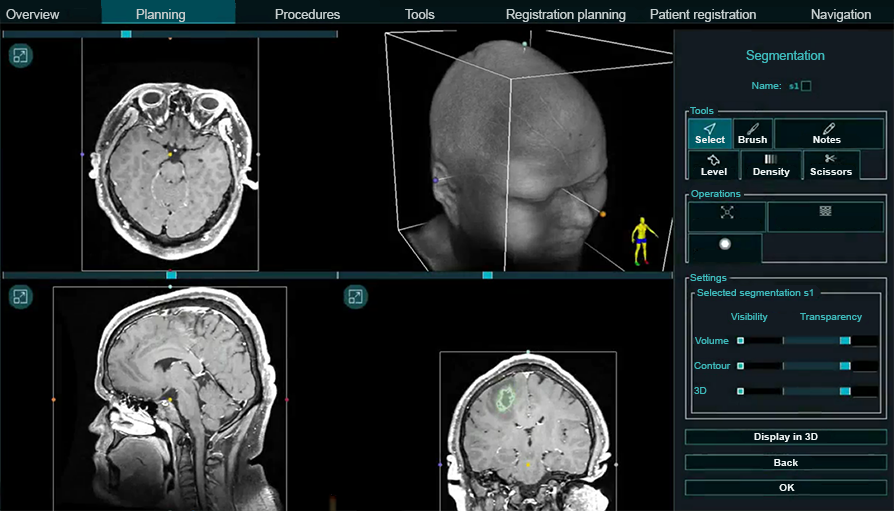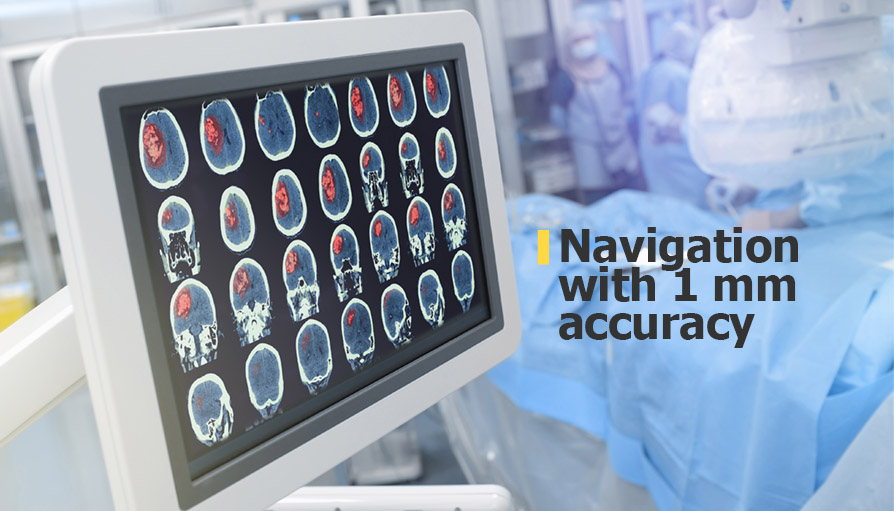Neuronavigator: optical navigation system for neurosurgeons
- Project Overview
-
Challenge
To develop a software and hardware system for accurate and safe operations on the brain and spine. It should be low-cost and easy to use for doctors.
Solution
We have designed a working prototype with the support of 3D images of ultrasound / MRI / CT. Neurosurgeons can monitor the position of their instruments in the patient's body in real time with an accuracy of one millimetre.
The working prototype of neuronavigator consists of a computer, a software platform, a monitor and a set of instruments with built-in sensors:
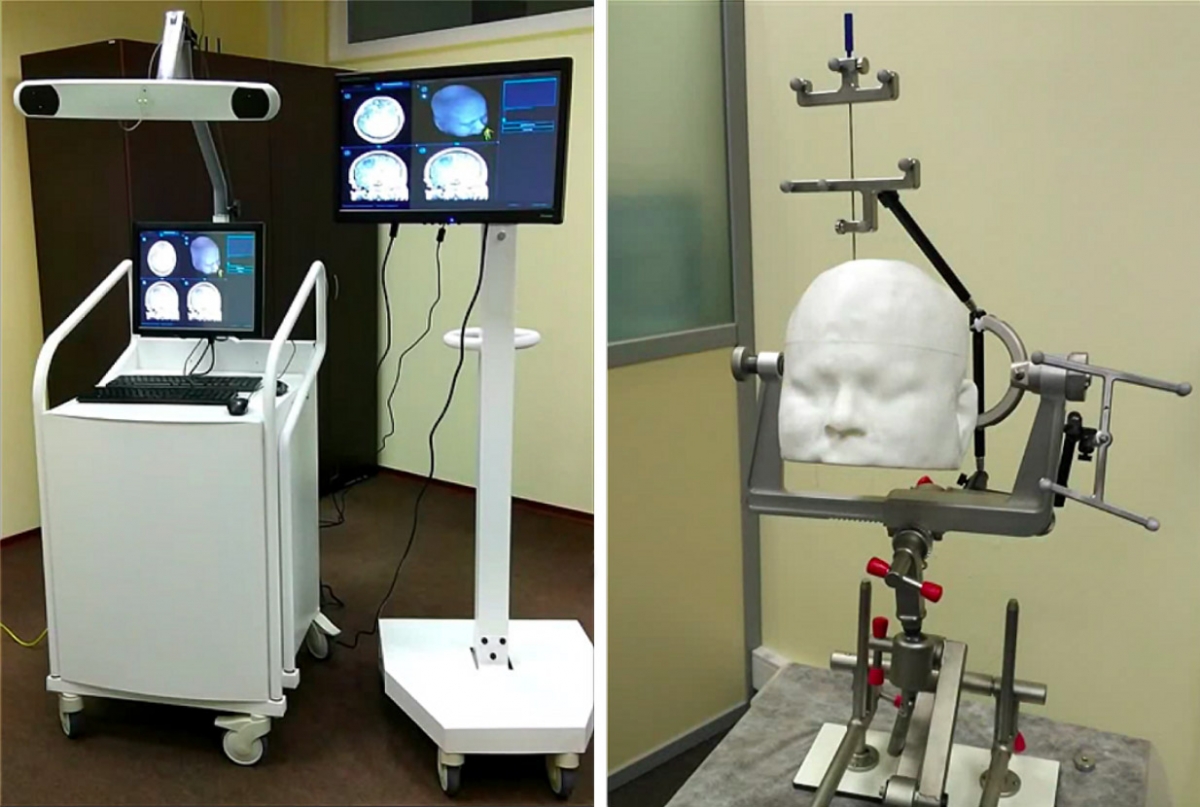
The Promwad engineering team consulted with the leading neurosurgeons of Eastern Europe. Our consultants have kindly demonstrated the use of navigation systems in real surgical operations. We took into account their knowledge and experience for this project.
As a result, we have completed the following tasks:
- Software development for planning and neurosurgical interventions: biopsy, shunting, craniotomy, and the removal of brain tumours.
- Design of surgical instruments and station adapters.
-
Manufacturing support, including building test-stands, checking and debugging the equipment.
The system tracks the position of surgical instruments via electromagnetic field or optically. It synchronizes with surgical equipment, downloads the CT / MRI / X-ray / ultrasound data, and then builds a generalized 3D model for the preoperative planning, including the remote one:
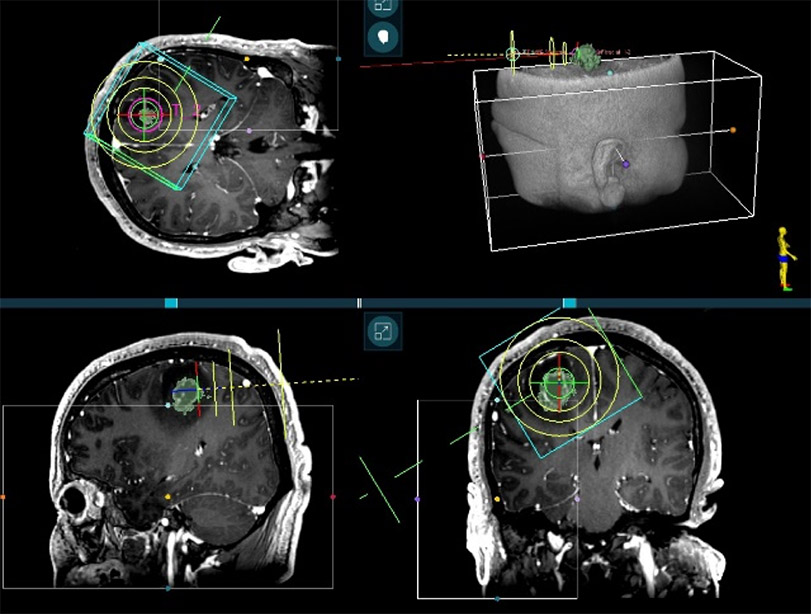
With this optical navigation system, neurosurgeons will be able to carry out complex and high-tech surgical interventions with minimal risk of damage to healthy tissues.
The neuronavigator can be used to:
- plan craniotomy (best location and minimum size);
- perform a biopsy, remove small brain tumours, localize their depth;
- puncture abscesses and cysts;
- remove intracerebral (parenchymal) hematomas;
-
perform hydrocephalus shunting.
Business and social value
The cost of the designed neuronavigator is 50% lower than market leaders offer, so it is affordable for the departments of neurosurgery in developing countries and small regional clinics. The forecasted share of the product on the world market is 15%.
It's also important to note that other optical navigation systems on the market have a lot of redundant features: our analysis shows that neurosurgeons use only about 20–30% of them for 80% of their operations. That is why we designed a neuronavigator with a user-friendly interface and a set of the most popular features. This approach not only solves the problem of the high cost of such devices but also significantly reduces the time and cost of training for surgeons.
- How It's Made
-
The station helps to control the operation at all stages, beginning with planning.
1. Our technology map
We chose the modular 3D Slicer package for processing and visualizing medical data. 3D Slicer uses the ITK and VTK libraries.
- 3D Slicer, an open-source software platform for processing medical images and 3D visualization.
- VTK, a freeware open-source software system for 3D graphics, image processing and visualization.
- ITK, an open-source cross-platform system with an extensive set of software tools for image analysis.
- Plus Toolkit, an open-source toolkit for data collection, pre-processing and calibration, used for navigational interventions with visual accompaniment.
- Qt4, a cross-platform framework for the development of user interfaces.
- MySQL, a database for storing data about users, patients and operations.
The navigation equipment is connected to the 3D Slicer via the Plus Toolkit, which, along with the equipment itself, is involved in calculating the coordinates of the instruments
2. Software development
We designed the ergonomic and functional UIX of the NeuroNavigation program with touch control. The program is divided into separate functional parts or modules:
-
Patient management module for patient management, operation plans, research preview.
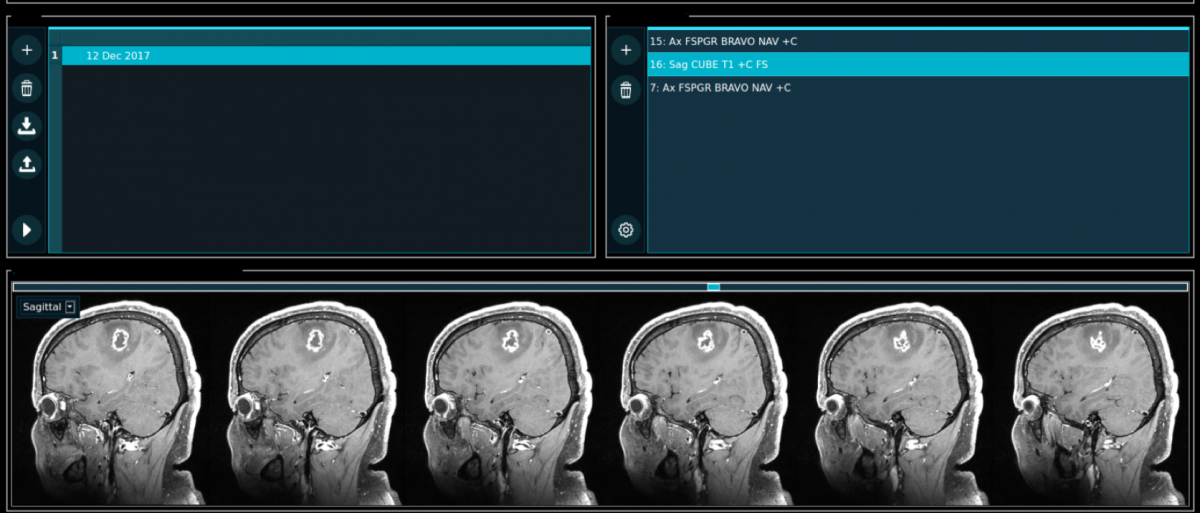
Patient management module. Patient window - Image enhancement module combining multi-modal images (for example, CT, MR, PET) for simultaneous display during planning or navigation.
- Measurement module for the measurement of linear dimensions, angles, areas and volumes.
- Segmentation module for the creation of segments for the visualization of anatomical structures during the course of operational planning or navigation.
-
Trajectory module for construction of trajectory of surgical intervention for intra-operative management based on the target point and entry point. It enables surgeons to visualize and evaluate the planned surgical approach to 3D-models and 2D-planes.

Segmentation and trajectory modules. Trajectory and tumor segment display - Annotation module for the creation of the areas of interest or the addition of notes.
- Composition module controls the display of scheduled elements to create a specific set that is optimally suited to the intended intervention.
- Patient registration module for patient registration on planned anatomical landmarks.
-
Navigation module for the tracking of a medical instrument.
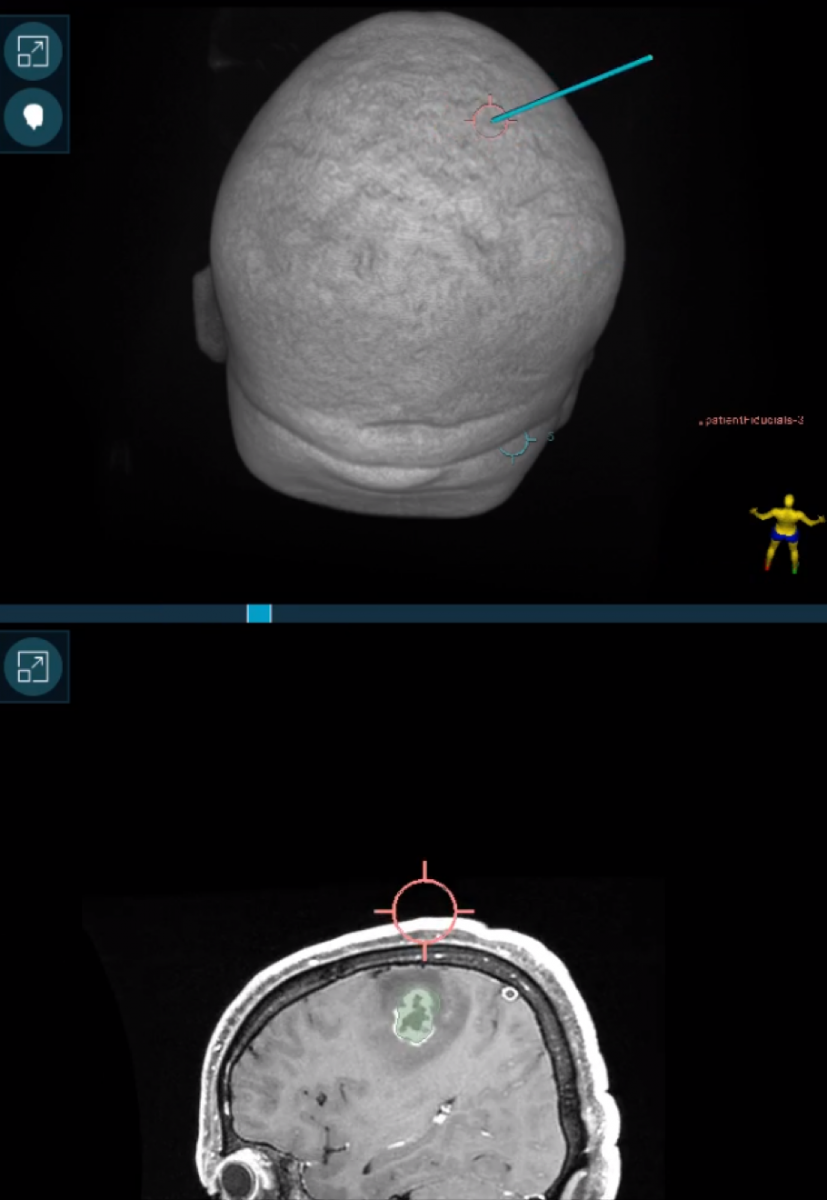
Patient management module. Patient window
3. Outcome
The designed medical navigation station can be used for puncture biopsies and resection of volumetric brain formations; operations on the spinal column; arthroplasty of the knee and hip joints; as well as other surgical interventions in the field of neurosurgery, oncology, orthopaedics & traumatology, otorhinolaryngology (ENT), maxillofacial surgery.



